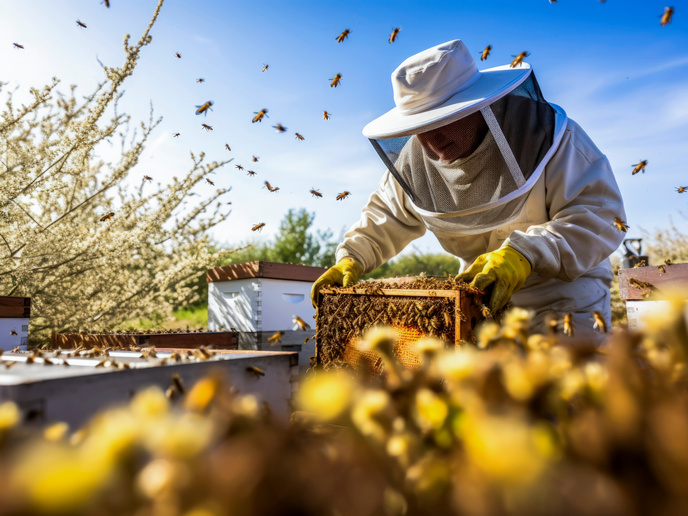Data-driven support for Europe’s beekeepers
Bees are indispensable to both pollination and the production of honey. Nonetheless, the sector is under immense pressure from climate change, pesticides, disease and habitat loss. Bees – and the beekeeping profession – have become increasingly vulnerable. The EU-funded B-GOOD(opens in new window) project was launched to make European apiculture more resilient. “We wanted to identify bee colonies that are in trouble earlier, and to intervene when necessary,” explains project coordinator Dirk de Graaf from Ghent University(opens in new window) in Belgium.
Introducing automated data collection
To achieve this, the project introduced automated data collection. “Over the last few decades, hive monitoring systems have been used,” says de Graaf. “These measure things such as colony weight, temperature and sound.” The B-GOOD project wanted to go one step further, by automatically collecting this data from a large number of hives, and then developing algorithms capable of detecting when something goes wrong. This could then lead to tailor-made interventions. To begin, the project installed monitoring technologies in 64 colonies, measuring parameters such as the number and weight of bees, and noise. One innovation was the introduction of a controlled electromagnetic ‘knock’, which caused vibrations. The team was able to see how reactions changed over the years, and to detect different responses from different colonies. “Over the next 2 years, we invited beekeepers from across Europe to join us and participate in data collection,” adds de Graaf. “We ended up having close to 400 colonies involved.”
Alerts and guidance for beekeepers
From this huge data set, the project team was able to develop algorithms that can detect when colonies are likely in trouble. “It became clear, for example, that the continuous measuring of the weight of a colony holds so much information,” remarks de Graaf. These algorithms were also used to send alerts to beekeepers, to inform them if something was probably going wrong. The algorithms are also used to trigger tailored guidance for the beekeeper, suggesting the appropriate course of action given the data received. “We were in direct communication with beekeepers throughout the project,” says de Graaf. “While once beekeepers might have made handwritten notes about their observations, now everything can be digitised and shared.”
Virtual landscapes and interactive maps
The project team also developed landscape suitability maps for bees across Europe. “These maps were based on the types of flowers: when they bloom, how much pollen they provide,” explains de Graaf. “We now have a better idea of which regions work best for bees.” In addition, a virtual landscape was created. “This works a bit like a flight simulator, but for beekeepers,” notes de Graaf. “In this virtual online landscape, modellers can position a virtual colony in a certain location, and see how the bees are likely to respond to the environment.” De Graaf is confident that the technological advances made in the B-GOOD project are on the path towards eventual adoption. “At the moment, the technology is still a little expensive, but we have already seen costs dropping over the past decade,” he adds. “In the meantime, we will build on the scientific proof of what we’ve found so far. We have shown that these technologies can monitor the health of colonies, and give guidance to beekeepers.”







